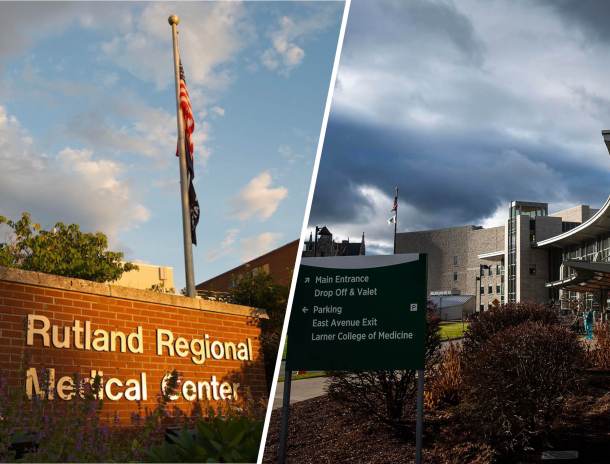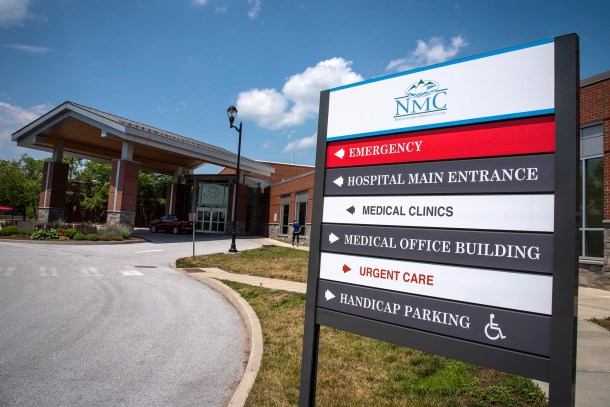

I was asked recently if there was a simple way to keep track of how our health care system measures up. My “simple” answer was, “Yes, count the number of people in emergency rooms, homeless shelters and jail cells.”
I was, in fact, answering a different question focused on “population health” rather than the success or failure of the health care system itself. Although they should be aligned, they encompass different objectives in practice.
The vital question we must answer is, are we measuring the success of the health care system and infrastructure, or measuring the well-being of the population they serve?
If the former, is the measure of success based on balance-sheet strength or delivery-on-mission? If it’s the financial and systemic well-being of the healthcare infrastructure itself, we’re failing.
If it’s delivery on mission — “population health,” as they state — we’re also failing, and the two major pain points are access and cost, which are related.
If “early diagnosis and treatment” is the “standard of care” in health care, then access becomes critical. If cost prevents access, then we must regulate cost.
We recently visited new Vermonters in central Vermont, both professionals on navigating health care systems, and they, too, expressed confusion. Their local hospital told them they would need a primary care doctor for referrals but they were then told they were 219th on the waiting list for a local primary care physician.
Current estimates are that the U.S. is short somewhere between 20,000 and 50,000 primary care docs, and to cover all rural areas effectively, the number practically doubles to 90,000.
As to cost, the stories are legion. I’ve had three close family members, all professionals, who have declined salary increases to retain their Medicaid option, but increasingly find that even that cost exceeds their capacity.
Most Vermonters presently cannot afford to access to health care. (see slide 44) The data show that 44% of Vermonters with private insurance are underinsured and cannot afford to cover the costs of health care. More than half of Vermonters have employer-assisted private insurance as their primary source (329,800), but shared costs, deductibles, copays and spiraling inflation make this unaffordable for many.
Meanwhile, the current round of hospital budget hearings has the University of Vermont Medical Center requesting a 20% increase in commercial insurance rates, Rutland Regional hospital is asking for an 18% increase, and the Central Vermont hospital is asking for 14.5%.
If double-digit increases are granted, access to health care services will diminish further. Furthermore, federal supports for insurance premium subsidies are set to expire in December. Given the congressional standoff in funding health care, the probable loss of these subsidies will pitch even more Vermonters into the realm of the uninsured.
Hospitals account for half
It’s past time to rethink all this.
But, as I’ve stated in earlier columns, the currently deployed infrastructure of 13 regional hospitals and two tertiary-care hospitals, UVM and Dartmouth-Hitchcock, is cost-excessive. Hospitals account for roughly half of all health care spending, leaving less money for essential community-based services that keep people healthy and divert them from expensive hospitalizations.
With demand far outpacing capacity for mental health, substance abuse and home health services, to name a few, some hospital funding must be redirected to those services — the only sensible course if we are to reduce costs over the long term.
If we cling to the goal of sustaining all this infrastructure with net positive income (all are nonprofits), we’ll have lost focus on the well-being of those the system is designed to serve.

Population health extends way beyond emergency rooms. It starts with neonatal care, early childhood education, care and play, trauma-informed family counseling and support, access to health care (mental and physical), healthy food, and access to education, secure housing, employment, and a healthy environment.
Back to the future?
If we redesigned a health care system to indeed focus on population health, it would not reflect what has evolved over the last 50 years in Vermont. In fact, it might look more like what preceded it in my childhood, with community doctors in small practices, local clinics and support services, and tiny community hospitals.
Meanwhile, UVM Health Network is consolidating its dominance and governance, eliminating the longstanding local community board members of each of these hospitals and reducing their ability to make strategic decisions based on the needs of their community.
Henceforth, decisions will be made based on the corporate needs of the network. How does consolidating the governance (finance, budgeting and strategic planning) of a dispersed six-hospital network in two states improve local delivery?
- The University of Vermont Medical Center
- UVM Health Network — Alice Hyde Medical Center
- UVM Health Network — Central Vermont Medical Center
- UVM Health Network — Champlain Valley Physicians Hospital
- UVM Health Network — Elizabethtown Community Hospital
- UVM Health Network – Porter Medical Center
- And UVM Health Network — Home Health & Hospice
Is the model for UVM’s expansion to create a clone of the Geisinger network, a massive health care business not without its own challenges?
If we’re ever to deliver accessible, affordable health care in the broader service of population health, it will be with a properly funded, local primary-care network supported by regional secondary- and tertiary-care hospitals designed solely to accommodate trauma, specialty, and high-acuity cases.

We’ll need to invest in several generations of new primary care doctors, nurses and nurse practitioners. The economics — including tuition forgiveness and adequate compensation — must work so they can afford to live in their communities.
We must reverse the number of nurses either leaving hospitals or becoming “travelers” (agency-hired) as well as the number of doctors leaving and starting “concierge” practices or retiring early.
When I was young, our family doctor, Phil Goddard, was one of three independent family practitioners in our small community of 4,000 people. They knew everyone in town, their strengths and frailties, their health status, history, and capacity to pay for a home or office visit, and they charged accordingly. Unlike Doctor Phil, today’s concierge doctors charge a fixed annual fee for access as needed, a fee beyond the reach of many.
We must make choices about what matters in our society. Population health encompasses almost all aspects of the social safety net. If health care is to aim for population health, it must start with support services in the communities served, escalating to secondary- and tertiary-care regional facilities with increased acuity or specialization.
As UVM Health Network reengineers its governance and dominance, absent any clear state health care policy, we’re putting “population health” further at risk.
Where is the leadership?
Gov. Scott seems to have washed his hands of health care and is AWOL. The Department of Health, which is responsible in statute for health care policy, has been AWOL since Gov. Shumlin pulled it into his office and never returned it.
The Green Mountain Care Board is struggling with its own job description, vacillating between health care policy architect and health care policy regulator. It will have to choose one or the other; it cannot ethically or practically do both.
The Legislature just passed Act 167, tasking the Green Mountain Care Board and the Agency of Human Services with engaging communities and providers to develop a more sustainable health care system. When will the public engagement begin? Will it be robust? Will leadership listen?
Meanwhile, the state’s largest health care entity, UVM Health Network, steers its own way through the ice floes with no clear policy or regulatory navigation, other than its goal of growth and consolidation.
If we really believe in population health and expect to care for our aging population, leadership must have the courage to make hard decisions.

Read the story on VTDigger here: Bill Schubart: It’s past time to rethink how Vermont health care is evolving.
